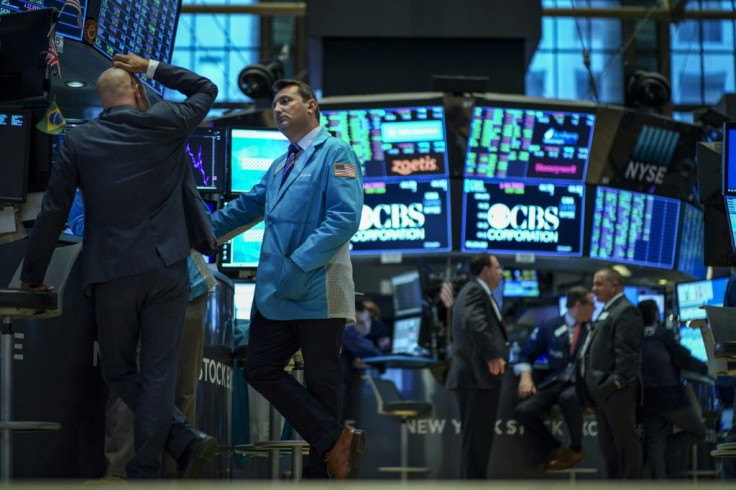Stock Market Futures: Dow, S&P 500, NASDAQ To See Small Rally Monday

KEY POINTS
- Stock futures seem to suggest a small recovery on Wall Street Monday
- Investors need a break from the pummeling stocks took last week, which set record losses for the Dow and S&P 500
- The COVID-19 news in the U.S. is turning from bad to worse
Stock futures for Monday point towards a modest rally from last week's bloodbath that saw all three Wall Street indices lose more than 10%. But Monday might again replicate a similar episode February 25 where futures pointed to higher next day gains before ultimately falling victim to COVID-19.
As of 9:30 p.m. ET, Sunday, Dow futures were indicating a gain upwards of 51 points at Monday’s open. Dow futures briefly fell more than 500 points. The S&P 500 and the NASDAQ Composite futures also reversed and suggest modest opening gains Monday.
“The outbreak of Covid-19 has certainly changed the near-term narrative,” said Chetan Ahya, global head of economics at Morgan Stanley in a note to clients Sunday. “It is an untimely shock, considering that the starting point of global growth was weak, and the recovery was very nascent.”
A spike in the exchange rate of the Japanese yen by 0.4% to 107.70 per U.S. dollar Sunday is being taken as an early indication the panicky sentiment that sent equity markets tumbling worldwide remains unchecked.
This, after a weekend highlighted by a surge in bad news pointing to a broader worldwide spread for the coronavirus. COVID-19 news is also bad in the U.S.
New York Gov. Andrew Cuomo Sunday night confirmed the state’s first positive coronavirus case. Rhode Island became the first U.S. state in the East Coast to report a confirmed COVID-19 case. Washington state Sunday confirmed two more cases of COVID-19 infections in King County, whose capital is Seattle. These two new patients, both men in their 60s, are in critical condition. In addition, two healthcare workers in Northern California have also tested positive for the coronavirus.
As of 9:43 p.m. ET, Sunday, the U.S. has 76 confirmed COVID-19 cases and two deaths, according to the Johns Hopkins Center for Systems Science and Engineering (CSSE). Worldwide, confirmed cases come to 89,069 of which 80,024 are in mainland China. There are 3,039 deaths globally.

Wall Street's worst case scenario this week is an unwanted repeat of the massive and historic bloodbath last week when the 30-stock Dow Jones Industrial Average lost 357.28 points to sink to 25,409.36. The S&P 500 slid 0.82% to 2,954.22. It was another story for the NASDAQ Composite, which fell as much as 3.5% on the day before closing 8,567.37, up a mere 0.010%. All three indices closed in correction territory.
The Dow fell more than 12% -- its biggest weekly percentage loss since the Great Recession of 2008. Friday was the seventh straight day of losses. The Dow yielded more than 3,500 points, by far its largest weekly point loss in history. It also ended the week in correction territory, down 14.1% from an intraday record high set only last February 12.
The Dow entered a 10% correction on February 27 when it closed at 25,766.64 over investor fears about the impact of the COVID-19 outbreak spreading into the U.S. A bear market in a strong economy, while seemingly incongruous, is now being seen as a distinct possibility.
© Copyright IBTimes 2024. All rights reserved.





















